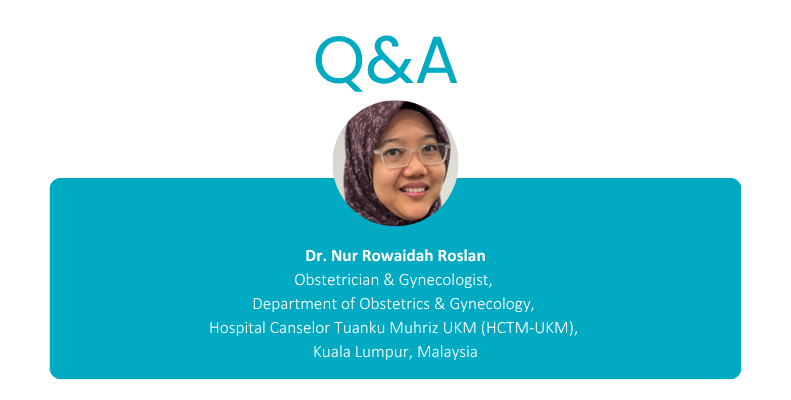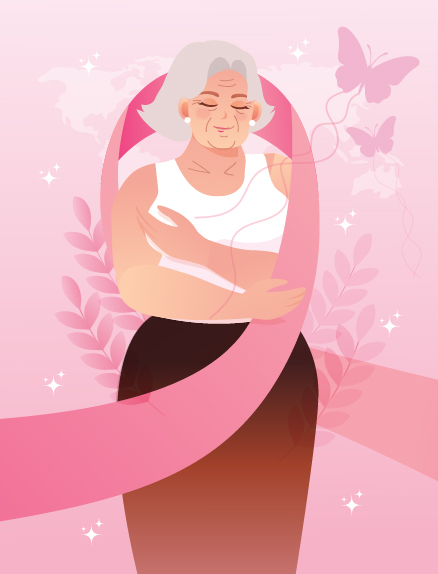HPV vaccination in focus: Preventing cervical cancer before it starts
16 Oct 2025
Share
Cervical cancer remains one of the most common cancers among Malaysian women, with the majority of cases linked to human papillomavirus (HPV).1,2 Since Malaysia introduced school-based immunization in 2010, vaccination coverage among adolescents has been modest, while intent and uptake among adults remains low.2,3 To bridge this gap, a public awareness campaign held on September 26, 2025 at Hospital Canselor Tuanku Muhriz UKM (HCTM-UKM) framed HPV vaccination, screening, and education as the pillars of prevention in the fight against cervical cancer. The interactive dialogue, “HPV Vaccination: 1 Injection with 1,000 Protections”, featured Professor Dr. Mohamad Nasir Shafiee and Professor Dr. Nirmala Kampan, Consultant Obstetricians and Gynecologists at HCTM-UKM, alongside cervical cancer survivor, Ms. Sharifah Nurul Huda. Together, they highlighted the urgent need to improve vaccine acceptance, expand access, and dispel misconceptions that remain a barrier to protection against HPV-related cancers.
More than 90% of cervical cancers are caused by persistent HPV infection rather than genetic factors alone.1 Although as many as 80% of adults are exposed to HPV at some point in their lives, the danger lies in infections that persists and cause cellular changes leading to precancerous lesions.4 Progression risk is further increased by long-term oral contraceptive use, smoking, immunosuppression, coinfection with other sexually transmitted diseases, and infection with high-risk HPV types.4 “Screening remains essential to detect these changes early, yet the uptake of HPV DNA testing in Malaysia is estimated at only 30%-40%,” Prof. Nasir noted. He emphasized that cervical cancer is the only gynecological cancer that can be both screened for and prevented, as the accessibility of the cervix allows precancerous changes to be treated before they progress.
Of more than 100 HPV subtypes identified, only a fraction are oncogenic.2,5 Vaccines target the high-risk strains most often linked to cervical cancer, particularly HPV 16 and 18, and show >90% efficacy when given before exposure.2,4 While the national program prioritizes adolescent girls, adults may also benefit.2,3 “Even in adulthood, vaccination can provide protection against HPV subtypes not yet acquired, boosting immunity and reducing the risk of future disease,” explained Prof. Nirmala. Vaccination is also recommended for males, as HPV transmission affects both sexes and contributes to anal, oropharyngeal, and penile cancers.4
The importance of early detection was illustrated by the personal account of Ms. Sharifah, who experienced heavy menstrual bleeding requiring blood transfusions. With no family history of cervical cancer, her diagnosis reflects a challenge faced by many women who are often identified once symptoms become severe. In reflection, Prof. Nasir emphasized the need for greater awareness of warning signs, including abnormal vaginal bleeding or discharge, and urinary symptoms in locally advanced cases, as well as the importance of routine Pap smears and HPV DNA testing, particularly for those at higher risk.
Despite strong scientific evidence supporting the safety and effectiveness of HPV vaccines, hesitancy persists, often due to concerns about side effects.2-4 Prof. Nirmala clarified that adverse events are generally mild and manageable, most often limited to injection-site pain or low-grade fever. She emphasized that efforts to address these misconceptions are vital to improving coverage and achieving herd immunity. The panel also referenced the WHO’s strategy to eliminate cervical cancer by 2030, which calls for 90% of girls to be fully vaccinated by age 15, 70% of women to undergo HPV testing by ages 35 and 45, and 90% of those diagnosed with cervical disease to receive treatment.6
In conclusion, cervical cancer is a preventable disease, and the tools to achieve elimination are already within reach.1,6 Aligning Malaysia’s prevention strategies with global targets will require coordinated action between healthcare providers, policymakers, NGOs, and communities to strengthen education, affordability, and access.2,3,6 Awareness campaigns that encourage both vaccination and timely screening, coupled with strong community partnerships, remain essential to ensuring that the next generation can live free from the burden of HPV-related cancers.6
In an interview with Omnihealth Practice, Dr. Nur Rowaidah Roslan discussed the role of human papillomavirus (HPV) vaccination in cervical cancer prevention, addressing eligibility, misconceptions, and public health considerations.
Q1: How does HPV vaccination help protect against cervical cancer?
Dr. Nur Rowaidah: HPV vaccination induces adaptive immunity through the production of antibodies against the virus, thereby preventing persistent infection and the development of precancerous lesions that may progress to cervical cancer. By targeting the high-risk HPV types responsible for the majority of cases, the vaccine provides sustained protection against disease progression.
Q2: Who should receive the HPV vaccine, and what is the recommended age?
Dr. Nur Rowaidah: HPV vaccination is most effective when administered before the onset of sexual activity, and is therefore strongly recommended for adolescents aged 9–14 years. Nonetheless, women and men up to 45 years of age may also benefit from vaccination. While earlier vaccines primarily targeted HPV types 16 and 18, newer formulations provide protection against up to nine oncogenic HPV types, and individuals who previously received vaccines with narrower coverage may consider additional doses to broaden protection.
Q3: What are common misconceptions about HPV vaccination, and what key messages should healthcare professionals convey to the public?
Dr. Nur Rowaidah: Several misconceptions continue to hinder HPV vaccination uptake. One is that the vaccine is intended only for females; in reality, HPV also contributes to anogenital and oropharyngeal cancers in men, and vaccination of both sexes is recommended in many international programs. Another misconception is that the vaccine causes infertility—this is unfounded, as extensive global safety data have shown no association between HPV vaccination and reduced fertility. Finally, some believe there is no benefit once an individual is sexually active. While the vaccine is most effective before exposure to HPV, sexually active individuals may still benefit by gaining protection against HPV types they have not yet acquired. Overall, HPV vaccines are safe, effective, and form an integral component of cervical cancer prevention strategies.
References
- Khan TM, et al. Female-Specific Cancers in Malaysia: A Comprehensive Analysis of Three Decades. Arch Pharm Pract. 2024;15(1-2024):109-20.
- Sopian MM, et al. Knowledge, decision-making and acceptance of human papilloma virus vaccination among parents of primary school students in Kota Bharu, Kelantan, Malaysia. Asian Pac J Cancer Prev. 2018;19(6):1509.
- Wong LP, et al. Human papillomavirus (HPV) vaccination intent and its associated factors: a study of ethnically diverse married women aged 27 to 45 in Malaysia, a Southeast Asian country. Hum Vaccin Immunother. 2022;18(5):2076525.
- Szymonowicz KA, Chen J. Biological and clinical aspects of HPV-related cancers. Cancer Biol Med. 2020;17(4):864-78.
- Dickson EL, et al. Multiple-type human papillomavirus (HPV) infections: a cross-sectional analysis of the prevalence of specific types in 309,000 women referred for HPV testing at the time of cervical cytology. Int J Gynecol Cancer. 2013;23(7):1295-302.
- World Health Organization. Global strategy to accelerate the elimination of cervical cancer as a public health problem. 2020. Available from: https://www.who.int/publications/i/item/9789240014107. Accessed October 2, 2025.







